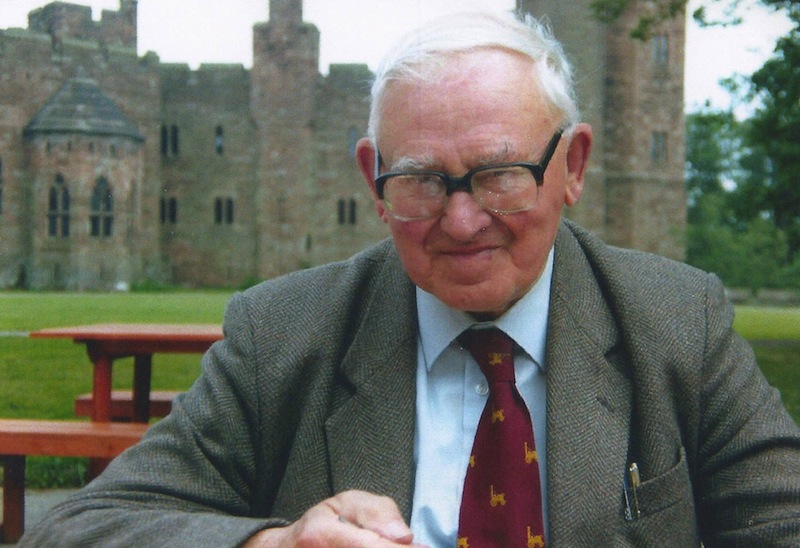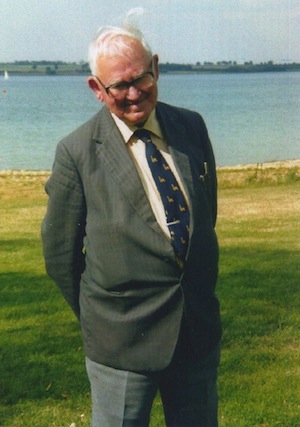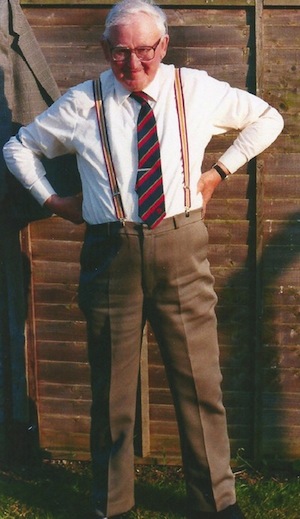THE SHELFORD ARCHIVE
OVERALL INTRODUCTION
John Randolph Shelford was born in 1911, the son of the Headmaster of The Duke’s School, Alnwick. From a very early age, he was always known as "Randy" - no-one ever called him John. Like his father he became a schoolmaster and was at Stamford School for many years after serving in the Royal Air Force during the Second World War on highly classified work which he never, ever discussed and took the secrets with him to the grave. His subject was geography — in which he graduated from Cambridge in the early 1930s.

John Randolph SHELFORD 1911 - 1995
He had a great enthusiasm for railways right from childhood and, in particular, he had a deep and abiding interest in LMS locomotives. He researched this subject thoroughly over very many years and collected many thousands of photographs of locomotives of LMS constituent companies, as well as the post-grouping standard classes. He compiled meticulous notes about the history of each individual locomotive with particular reference to dates of building, modification, rebuilding and withdrawal. He also traced and recorded the often complex sequence of re-numbering through the pre-grouping, grouping and nationalised eras. All this information was painstakingly typed (no computers) in tabular form with appropriate accompanying descriptive and informative text.

However, his primary object appears to have been to assemble a photographic record of as many individual locomotives as possible to illustrate their physical progress through the various changes in appearance over the years, whether it be by modification and rebuilding or by livery changes and re-numbering. This integration of typescript and photographs grew into some 370 multi page folders covering the LMS group. Although it was largely complete by the time of his death in 1995, it is clear he did not regard it as in any way finalised. There had clearly been many amendments made over the years – re-typed sentences being neatly pasted in over the previous text to avoid the need to re-type the whole page. And there are numerous pencil annotations, which were clearly preparatory to a typed amendment. Occasionally one comes across a pencilled note such as "Wrong" or "Needs to be re-written".
The whole collection was kept in the family for a time after his death, but they decided to sell at auction and it was dispersed in 1997. The section preserved by the Trust is believed to be the only section which has survived intact and covers Midland Railway (and London, Tilbury & Southend Railway) locomotives which, of course, is only a part of the original collection (some 80 original folders out of 370).
There was no original index to Shelford’s complete work. He used a classification system based on wheel arrangement and the Trust has catalogued his sheets in some detail with two main objects in mind: to enable a search to be made for individual locomotives by number and to enable a search for all locomotives built (or purchased) by the Midland Railway or its constituent companies in any given year from the 1830s to 1922. This has resulted in some 1410 items listed on the database from 24000 to 25407 (including two items with an "01" suffix). His detailed classification system has been retained and the sheets arranged broadly in a sequence which is based on date of manufacture within wheel arrangements. For the early constituent companies, the lists are tailored to reflect the amount of information he was able to discover in each case.
| Volume | Main Class |
|---|---|
| 1 | Constituent Companies (pre 1844) |
| 2 | Kirtley 2-2-2 |
| 2, 3 | Kirtley 2-4-0 |
| 3, 4 | Johnson 2-4-0 |
| 5 | Johnson 4-2-2 |
| 6, 7, 8 | Johnson 4-4-0 |
| 8, 9 | Deeley & Fowler 4-4-0 |
| 10 | Compound 4-4-0 |
| 11 | Shunting Tank Locomotives (Kirtley, Johnson & Deeley) |
| 12 | Johnson 0-6-0T |
| 13, 14 | Kirtley & Johnson 0-4-4T |
| 14 | Deeley 0-6-4T |
| 15, 16 | Kirtley 0-6-0 |
| 16, 17, 18 | Johnson & Deeley 0-6-0 |
| 19 | Deeley & Fowler 0-6-0 |
| 19 | Miscellaneous Locomotives |
| 20, 21 | LT&SR Locomotives |
Shelford’s original sequential arrangement of his notes was somewhat inconsistent and there is evidence that he changed his mind, as the work developed, on how to organise and present the information on the various classes. He never went back over the whole Midland Railway section to standarise on title pages for each class (or group of classes) and so it has been necessary for the Trust to carry out this task retrospectively to ensure a logical uniformity amenable to searching on a database. His mixture of "class title pages" have therefore been included as a separate section at the end of the archive. They have been retained for two reasons: (a) they contain photographs in many cases and (b) they form part of his original work.
Within each main classification is a series of sub-classes defined by him and referenced by the number of the first locomotive of the sub-class to be built. Information about each sub-class is arranged in a standard sequence:
(a) dimensional information, descriptive text and, in most but not all cases, source notes.
(b) numbering, renumbering, modification / rebuilding and withdrawal information.
(c) illustrations of individual locomotives — in nearly all cases these are postcard size photographs. There are often different images of the same locomotive and he took considerable trouble to try to ensure these reflected the different build / modification states covered in his tabulations and descriptive notes. There are many photographs chosen to show the same locomotive in its various re-numbered states through the MR, LMS and BR renumbering schemes.
In the case of early locomotives (before the photographic era) he has, whenever possible, included line drawing or sketches for illustrations.
Because the photographic record is central to Shelford’s archive, the Trust has decided not to subsume the 3,000 photographs it contains into the main photograph collection located at Kidderminster Railway Museum. To have done so would have ripped the heart out of his archive and totally destroyed his concept in creating what, in its original entirety, was clearly a life’s work.

SEARCHING THE SHELFORD ARCHIVE
The following notes are intended to give guidance on optimum use of the search facility in respect of the Shelford Archive (Key words are not case sensitive).
The above is only a brief guide to some of the search options possible for the Shelford Archive.
Photographs of John Randolph SHELFORD are used with the very generous consent of the Shelford family.